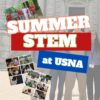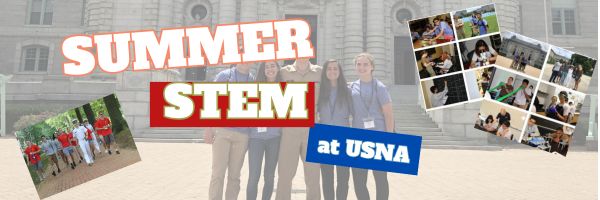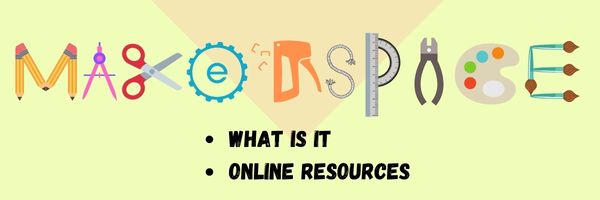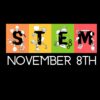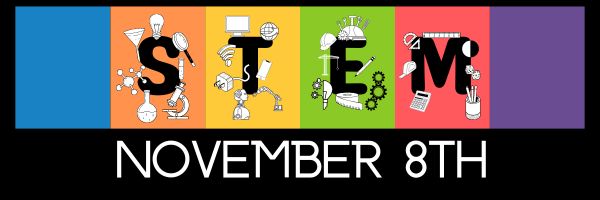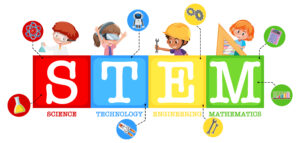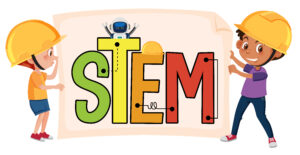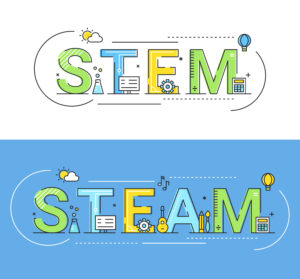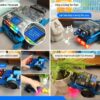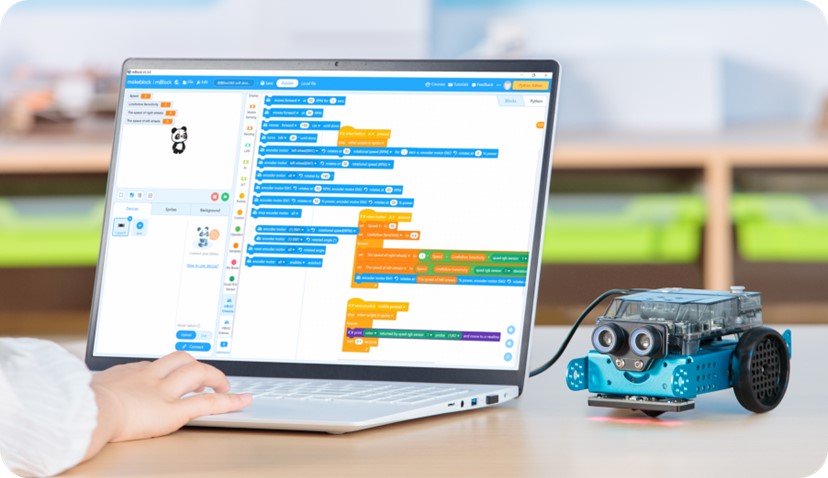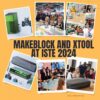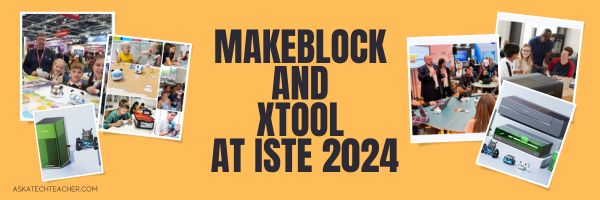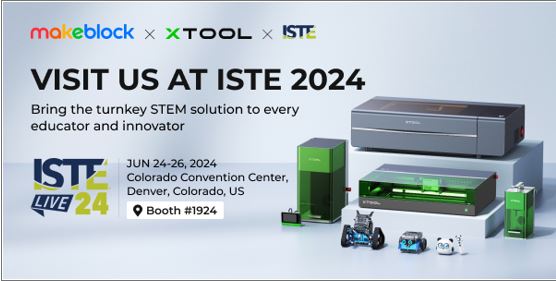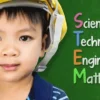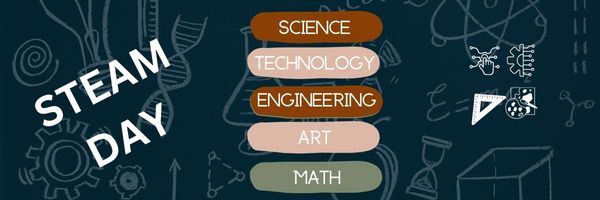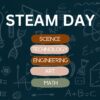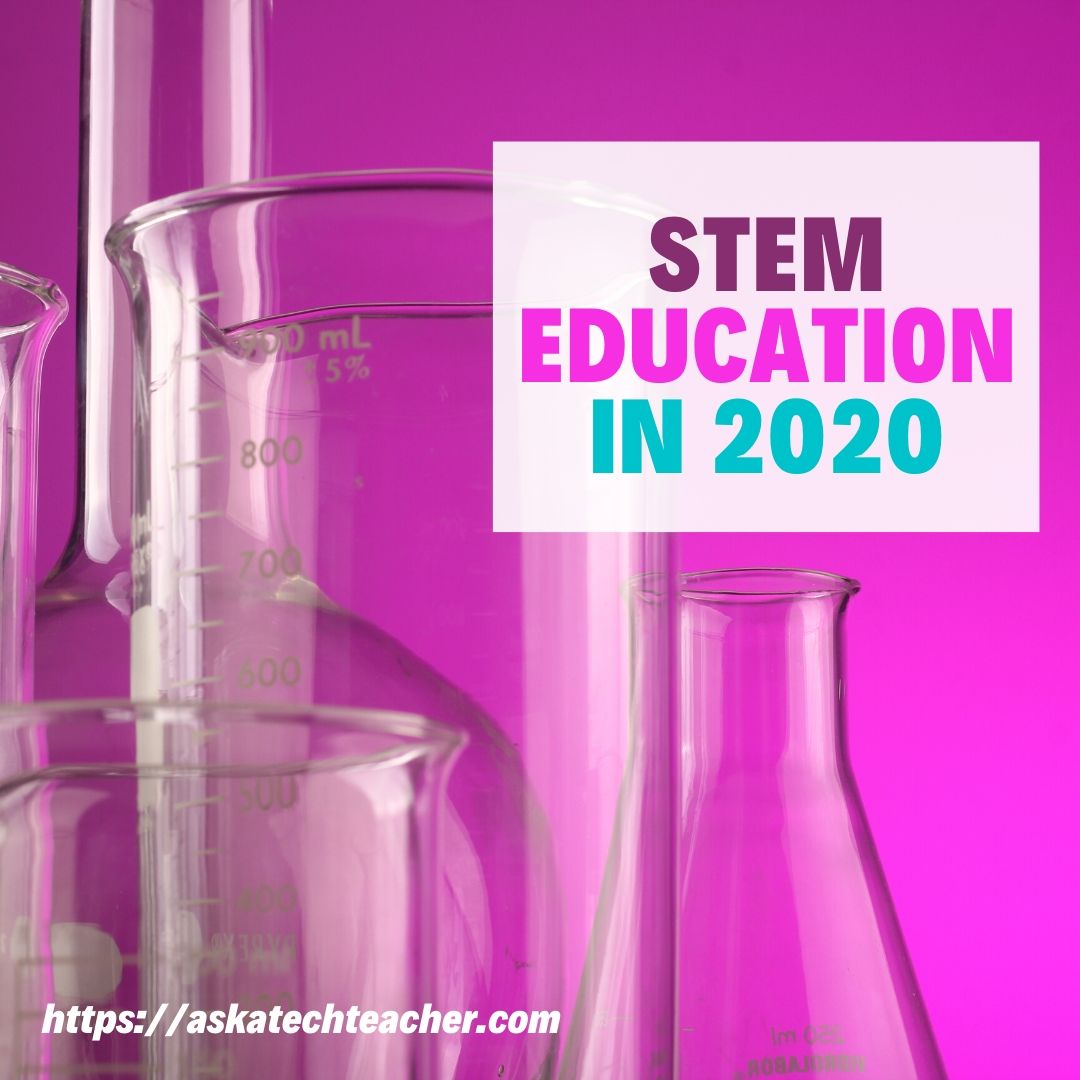Tag: STEM
Summer STEM at USNA
Summer STEM (Science, Technology, Engineering & Mathematics), is a week-long, overnight camp at USNA each year for students currently in the 7th-10th grades. Here’s information from the USNA website:
Engineering is all about creating, building, and making things better! So what does it take to be an engineer? If you like math and science, you are off to a great start. If you enjoy discovering new things, solving problems, and learning how things work – even better! Creativity, persistence, and the desire to make the world a better place are also important qualities. Becoming an engineer requires hard work and a good education. Our summer program will be a great start to your career in science and engineering.
The schedule:
Monday: Travel and Check-in
Tuesday: Air and Space Museum/DC Tour
Wednesday – Friday: Stem modules and presentations (Students will visit all science and technology majors at the US Naval Academy)
Saturday: Open House and Demonstrations—Share your new skills with your parents and friends. End the week by putting your projects on display.
Share this:
Will AI-driven Education Replace STEM? Experts think so
When I saw this ESchoolMedia article, my first response was, He** no! but I paused to ask why a reputable magazine would even ask this question. Before reading the article, I asked Grok the same question. Here’s what a generative AI has to say about that issue:
The end of STEM: Why AI-driven education must replace an outdated model
Share this:
7 Online Resources About Creating a #MakerSpace
A school-based makerspace is a hands-on, creative environment where students can explore STEM (Science, Technology, Engineering, and Math) and other interdisciplinary subjects. These spaces empower students to develop critical thinking, problem-solving, and collaborative skills while working on real-world projects. Key features are:
- Tools and Equipment:
- Basic Tools: Screwdrivers, hammers, pliers, and measuring devices.
- Technology: 3D printers, laser cutters, CNC machines, and vinyl cutters.
- Electronics: Arduino kits, Raspberry Pi boards, soldering stations, and basic circuitry tools.
- Crafting Tools: Sewing machines, paper cutters, and hot glue guns.
- Workstations:
- Dedicated areas for specific tasks like soldering, 3D printing, coding, or woodworking.
- Materials:
- Cardboard, wood, fabric, plastics, LEDs, wires, and recyclables for prototyping and building.
- Software:
- Tools for design, coding, and 3D modeling (e.g., Tinkercad, Fusion 360, Scratch, or Python IDEs).
- Learning Opportunities:
- Workshops or guided projects on topics like robotics, coding, 3D modeling, and engineering principles.
- Integration with the school’s curriculum to reinforce learning in subjects like physics, math,
Here are 7 online resources to help you create a school-based MakerSpace (click here for updates on this list):
Share this:
National STEM Day Nov. 8th
National STEM Day is November 8, 2024, the unofficial holiday that celebrates science, technology, engineering and mathematics (STEM) education throughout the United States. Many add ‘art’ to the celebration for the acronym, STEAM. Here are some great ideas that remind your students of the excitement that is these core subjects:
Ten Ways to Celebrate National STEM Day with NASA
National STEM Day focuses on helping students advance in STEM fields, a priority of NASA as we continue to push the boundaries of exploration and soar into the future. In celebration of National STEM Day, we challenge you to engage and inspire the Artemis generation as we go forward to the Moon by 2024 and continue to innovate in the areas of Earth science and aeronautics. To help you join in on the festivities, here are 10 ways you can celebrate National STEM Day with us.
49 STEM Activities for Students
On November 8th, we will celebrate National STEM Day to get kids excited about Science, Technology, Engineering, and Math (STEM). Together the STEM subjects represent some of the fastest-growing and most in-demand fields in the United States.
While STEM topics seem a natural fit in high schools and post-secondary curriculum, education experts are promoting a focus on STEM subjects for younger and younger children.
12 Projects for your STEAM program
Twelve favorite STEAM projects where artistic thinking becomes the engine for unpacking solutions.
Activities from Engineering for Kids
National STEM/STEAM Day is dedicated to all things science, technology, engineering, art, and math. STEM (and STEAM) represents some of the fastest-growing and in-demand fields in the world today and Engineering For Kids is passionate about inspiring the next generation of engineers, artists, and innovators.
Bring Weather into Your Lesson Plan with Earth Networks and WeatherSTEM
One of the hottest topics in schools and an area of greatest need is STEM resources. Earth Networks has developed creative and compelling STEM curricula on a variety of weather topics. Any school with a weather unit or an onsite weather station will appreciate this site. I asked them to drop in and explain their education programs to the AATT community:
This STEM bundle includes four lesson plans: Engineering and Design, The Human Body, Keyboarding and the Scientific Method, and Robotics. All incorporate technology into authentic class activities such as bridge building, note-taking, and math. Each lesson plan includes an Essential Question and Big Idea, average time required to complete, suggested appropriate grade level, suggested teacher preparation, step-by-step directions (see preview for an example), assessment strategies, pedagogic background, samples, and images (where relevant).
Share this:
Introducing the Makeblock mBot2: A Fun and Educational AI Robot for Coding
Introducing the Makeblock mBot2: A Fun and Educational AI Robot for Coding
The Makeblock mBot2 is a delightful and educational AI robot designed to captivate the interest of children aged 8-12 in the fields of STEM. This robot toy not only provides an engaging visual learning experience but also teaches essential skills in programming, electronics, robotics, and computer science. It is a popular choice for educational settings such as classrooms and after-school programs, as well as for home use, fostering the development of logical thinking, problem-solving, and project creation abilities.
A Beginner-Friendly STEM Kit with Rich Educational Resources
The mBot2 is an ideal starting point for young robotics enthusiasts, offering an easy-to-assemble kit that most children can build in less than 30 minutes. This quick setup allows them to jump right into coding and interactive play. The mBot2 is also supported by a rich collection of educational materials, including free access to mBlock, a coding software that makes learning both fun and accessible. For those who prefer a structured learning path, more than eight free courses are available, covering topics like computer science, coding, and STEM fields. These courses teach students how to apply theoretical concepts in real-world scenarios, with over 33 instructional cases that explore the mBot2’s capabilities, such as obstacle avoidance and line-following. (more…)
Share this:
Makeblock and xTool Ignite ISTE 2024:
Makeblock and xTool Set to Ignite ISTE 2024: A Glimpse into the Future of STEAM Education
As the curtains draw closer for the 2024 International Society for Technology in Education (ISTE) Conference, the educational community is abuzz with anticipation. Scheduled to take place from June 24-26 in the vibrant city of Denver, the event stands as a lighthouse for those seeking to revolutionize their classrooms with the latest in educational technology. This conference is the epicenter for educators, technologists, and visionaries who are driven by the passion to transform learning through the integration of technology.
A Pioneer in STEAM: Makeblock’s Commitment to Innovation
For nearly ten years, Makeblock has been a trailblazer in the realm of STEAM education, consistently leading the charge in delivering holistic solutions that both empower educators and ignite the imagination of students worldwide. Their diverse range of products includes sophisticated hardware, intuitive software, and a meticulously crafted curriculum, enhanced by top robotics competitions. Makeblock has been instrumental in fostering the principles of STEAM and nurturing the creative spirit of the next generation of innovators.
Share this:
How Laser Cutter Brings New Inspiration to the Classroom
STEM education–Science, technology, engineering, and math–sounds intimidating, but is actually one of the most satisfying learning experiences students can participate in. Makeblock (an Ask a Tech Teacher sponsor) has some excellent resources for this field. Today, we’ll discuss:
How Laser Cutter Brings New Inspiration to the Classroom
STEM education is the need of this modern era, which is why teachers look for some interesting ways to teach these subjects and skills. They try to find new activities, games, toys, tools, or anything that can engage students and help them learn without struggling.
A laser cutter can spark creativity among students. They can turn their imagination into reality, which gives them a sense of joy and pride. They can cut and engrave different types of materials and make products and items they like.
Students, as well as teachers, enjoy using a school laser cutter. It is a perfect option for K-12 schools, colleges, universities, DIY enthusiasts, artists, professionals, etc. It is completely safe and easy to use in schools and has the capability to turn learning into fun.
In this article, we will explain the benefits of using a laser cutter for education. We explore what students can make with the machine to uncover their creativity and develop various skills. Moreover, we will also share an ideal laser cutter for schools that empowers students to take their skills to the next level safely and easily. (more…)
Share this:
100s of Websites on STEM-STEAM
After you’ve checked out our favorite STEAM resources, here are some of those that teachers use to teach STEM and STEAM:
Science
Technology
Engineering
Art
Math
Share this:
National STEM/STEAM Day Nov. 8th
National STEM Day is November 8, 2022, the unofficial holiday that celebrates science, technology, engineering and mathematics (STEM) education throughout the United States. Many add ‘art’ to the celebration for the acronym, STEAM. Here are some great ideas that remind your students of the excitement that is these core subjects:
Ten Ways to Celebrate National STEM Day with NASA
National STEM Day focuses on helping students advance in STEM fields, a priority of NASA as we continue to push the boundaries of exploration and soar into the future. In celebration of National STEM Day, we challenge you to engage and inspire the Artemis generation as we go forward to the Moon by 2024 and continue to innovate in the areas of Earth science and aeronautics. To help you join in on the festivities, here are 10 ways you can celebrate National STEM Day with us.
49 STEM Activities for Students
On November 8th, we will celebrate National STEM Day to get kids excited about Science, Technology, Engineering, and Math (STEM). Together the STEM subjects represent some of the fastest-growing and most in-demand fields in the United States.
While STEM topics seem a natural fit in high schools and post-secondary curriculum, education experts are promoting a focus on STEM subjects for younger and younger children.
12 Projects for your STEAM program
Twelve favorite STEAM projects where artistic thinking becomes the engine for unpacking solutions.
Activities from Engineering for Kids
National STEM/STEAM Day is dedicated to all things science, technology, engineering, art, and math. STEM (and STEAM) represents some of the fastest-growing and in-demand fields in the world today and Engineering For Kids is passionate about inspiring the next generation of engineers, artists, and innovators.
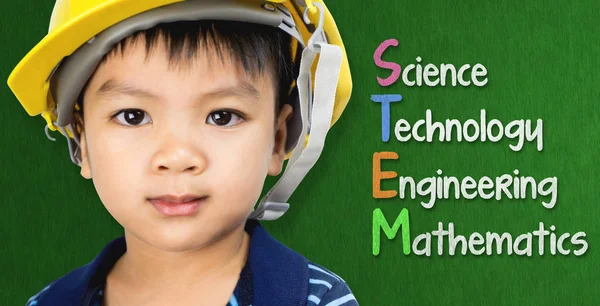 Bring Weather into Your Lesson Plan with Earth Networks and WeatherSTEM
Bring Weather into Your Lesson Plan with Earth Networks and WeatherSTEM
One of the hottest topics in schools and an area of greatest need is STEM resources. Earth Networks has developed creative and compelling STEM curricula on a variety of weather topics. Any school with a weather unit or an onsite weather station will appreciate this site. I asked them to drop in and explain their education programs to the AATT community:
5 Ways to Celebrate National STEM/STEAM Day
National STEM/STEAM Day is an opportunity to focus on helping kids advance in the fields of science, technology, engineering, art, and math. Creating understanding around STEM and STEAM is a big topic of conversation today. Statistics show few American students pursue expertise in STEM fields—and we have an inadequate pipeline of teachers skilled in those subjects. On the flipside of that the need for STEM oriented job skills are skyrocketing.
This STEM bundle includes four lesson plans: Engineering and Design, The Human Body, Keyboarding and the Scientific Method, and Robotics. All incorporate technology into authentic class activities such as bridge building, note-taking, and math. Each lesson plan includes an Essential Question and Big Idea, average time required to complete, suggested appropriate grade level, suggested teacher preparation, step-by-step directions (see preview for an example), assessment strategies, pedagogic background, samples, and images (where relevant).
Share this:
National STEM/STEAM Day Nov. 8th
 National STEM Day is November 8 and the unofficial holiday celebrates science, technology, engineering and mathematics (STEM) education throughout the United States.
National STEM Day is November 8 and the unofficial holiday celebrates science, technology, engineering and mathematics (STEM) education throughout the United States.
Here are some great ideas for celebrating:
Ten Ways to Celebrate National STEM Day with NASA | NASA
National STEM Day is November 8 and the unofficial holiday celebrates science, technology, engineering and mathematics (STEM) education throughout the United States. The day focuses on helping students advance in STEM fields, a priority of NASA as we continue to push the boundaries of exploration and soar into the future. In celebration of National STEM Day, we challenge you to engage and inspire the Artemis generation as we go forward to the Moon by 2024 and continue to innovate in the areas of Earth science and aeronautics. To help you join in on the festivities, here are 10 ways you can celebrate National STEM Day with us.
49 STEM Activities for Students
On November 8th 2019, we will celebrate National STEM Day to get kids excited about Science, Technology, Engineering, and Math (STEM). Together the STEM subjects represent some of the fastest-growing and most in-demand fields in the United States.
While STEM topics seem a natural fit in high schools and post-secondary curriculum, education experts are promoting a focus on STEM subjects for younger and younger children. You might be asking, what will a four or five-year-old student be able to understand about these subjects?

